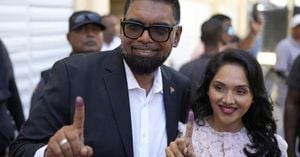The Australian government has taken definitive action to address concerns over youth mental health and social media usage, passing legislation to prohibit individuals under 16 from establishing social media accounts. Nevertheless, these youths will still be allowed to view social media whether logged-in or not. This ban raises significant questions and has generated much debate about the best methods for safeguarding young people without stifling their engagement with this ubiquitous technology.
Expected to be enforced by the end of 2023, the new rules have sparked urgent discussions among researchers, parents, and policymakers alike. While many parents welcome this legislation fearing the consequences of unchecked social media exposure on their children, experts and studies present a more nuanced view. Various concerns have arisen linking social media use to worsening mental health among Australian youth, but researchers caution against assuming these platforms are the sole cause.
At the University of Queensland, researchers have pointed out the lack of substantial evidence directly correlates social media with youth mental health issues. Dr. Daniel Golshvesky, known as Dr. Golly, advocates for strict recommendations on screen time for young children. He suggests none for toddlers under two, less than one hour for those aged two to five, and offers insights on how to navigate this digital world safely.
"We cannot get away from screens, nor do we want to push them away. It’s about doing it safely rather than not doing it at all," Dr. Golshvesky emphasizes. His insights signify the growing realization among experts and practitioners: outright bans might not be effective solutions to deeply entrenched societal challenges.
Current studies substantiate mounting concerns over social media's detrimental impact on the younger generation, with findings indicating young people using these platforms for more than three hours daily are twice as likely to suffer from conditions like anxiety and depression. These alarming trends echo through the broader narrative of rising youth mental illness, with nearly one-third of Australian youth now diagnosed with measurable mental health disorders.
Despite the legislation pushing forward, critics such as Mr. Pettersson—a resident with disabilities—argue from personal experience about the importance of parental involvement. "Not every grandparent can travel to see family...My children are responsible for the parenting and guidelines set for their children. It is not government responsibility to mitigate every issue," he states, highlighting the effectiveness of established parental roles rather than governmental interference.
The arguments for increasing digital literacy, fostering open communication, and educating families seem to present viable alternatives to the blanket ban. Ignoring the diverse motivations behind children's social media usage—inclusive of learning and connecting with their peers—could lead to stigmatization rather than resolution. There's no denying the incentives social media provides for many, including positive user experiences when properly moderated.
Combining prevention efforts with education on responsible social media consumption could be the way forward. Community initiatives providing support for families, along with comprehensive digital literacy campaigns, might lead to healthier online attitudes. A recent survey revealed astonishing statistics: 78% of students who received education on responsible social media usage reported they chose to engage more mindfully online.
And yet, opinions about the best path forward remain divided. Many advocate for the need to grapple with the systemic issues surrounding excessive social media usage among youth, including socioeconomic factors, rather than resorting to expedient bans. Some experts note the unwillingness of tech-savvy youth to adhere to such restrictions, comparing them to alcohol prohibition experience—often resulting only in heightened rebelliousness.
While bans on social media utilize the language of protection, they might inadvertently overlook the empowerment through education and shared family values. What if society focused on forging healthy relationships with digital technology? Finally, the emphasis remains on fostering dialogues about technology rather than instilling fear or prompting rebellion. The dialogue surrounding these dichotomous approaches continues to develop as Australia treads carefully toward addressing these pressing issues head on.
The complexity of youth mental health and social media use suggests there are no easy answers. Rather, governments should explore nuanced, evidence-based strategies and address the underlying societal problems causing systemic disparities. Going forth, Australia’s ability to find the balanced road between regulation and empowerment will set the course for how young people navigate their digital landscapes.



